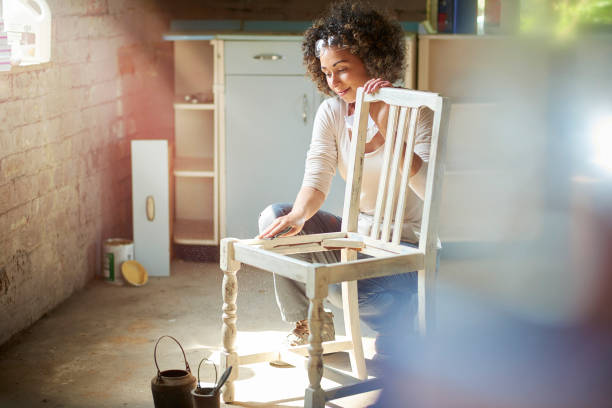The Environmental and Cost Benefits of Second Hand Doors: A Comprehensive Guide
In an era of increasing environmental awareness and cost-consciousness, second hand doors have emerged as a popular choice for homeowners and renovators alike. These pre-loved entryways not only offer unique character and charm but also contribute to sustainable living practices. This article explores the various aspects of purchasing, inspecting, installing, and restoring second hand doors, highlighting their environmental and economic advantages.

What Should You Look for When Buying Second Hand Doors?
When venturing into the world of second hand doors, it’s crucial to approach the purchase with a discerning eye. First and foremost, assess the overall condition of the door. Look for signs of warping, cracking, or severe damage that may compromise its structural integrity. Pay close attention to the material – whether it’s solid wood, engineered wood, or metal – as this will influence its durability and potential for restoration.
Consider the door’s style and whether it complements your home’s architecture. Vintage doors can add character to modern spaces, while contemporary designs might suit a more minimalist aesthetic. Check the dimensions carefully to ensure the door will fit your existing frame or can be easily modified. Additionally, examine the hardware, such as hinges, locks, and handles, to determine if they’re in good working order or need replacement.
How Can You Inspect Second Hand Doors for Hidden Issues?
A thorough inspection is vital to avoid costly surprises after purchase. Start by examining the door in good lighting conditions. Run your hands along the surface to feel for any unevenness, cracks, or areas of rot that might not be immediately visible. Pay special attention to the bottom of the door, which is often susceptible to water damage.
Check for signs of insect infestation, particularly in wooden doors. Small holes or sawdust-like residue could indicate the presence of woodworm or other pests. Test the door’s weight and swing to ensure it’s balanced and doesn’t stick or drag. If possible, use a level to check if the door is warped. Finally, inspect the core of the door by looking at its cross-section or tapping it to assess its solidity.
What Tools and Skills Are Required to Install Second Hand Doors?
Installing second hand doors can be a rewarding DIY project, but it requires certain tools and skills. Essential tools include a tape measure, level, drill, screwdriver, chisel, and saw. You may also need a plane for adjusting the door’s fit and sandpaper for smoothing rough edges.
Skills-wise, basic carpentry knowledge is beneficial. You should be comfortable with measuring accurately, cutting precisely, and understanding how to adjust hinges and locks. The ability to troubleshoot issues like sticking or misalignment is also valuable. If the door needs to be resized or significantly modified, more advanced woodworking skills may be necessary.
For those less confident in their DIY abilities, hiring a professional carpenter or door fitter might be a wise investment to ensure proper installation and function.
What Are the Environmental and Cost Advantages of Using Second Hand Doors?
The environmental benefits of choosing second hand doors are significant. By opting for pre-owned doors, you’re reducing demand for new production, which helps conserve natural resources and decrease energy consumption associated with manufacturing. This choice also diverts usable materials from landfills, contributing to waste reduction.
From a cost perspective, second hand doors can offer substantial savings compared to new alternatives. While prices vary depending on the door’s condition, style, and material, you can often find high-quality doors at a fraction of the cost of new ones.
| Door Type | Average New Cost | Average Second Hand Cost | Potential Savings |
|---|---|---|---|
| Solid Wood Interior | $200 - $1000 | $50 - $300 | Up to 70% |
| Exterior Front Door | $500 - $2000 | $100 - $600 | Up to 80% |
| French Doors (Pair) | $1000 - $4000 | $200 - $1000 | Up to 75% |
Prices, rates, or cost estimates mentioned in this article are based on the latest available information but may change over time. Independent research is advised before making financial decisions.
How Can You Restore and Modify Second Hand Doors for Modern Living Spaces?
Restoring second hand doors can breathe new life into these architectural elements while preserving their unique character. Start by thoroughly cleaning the door and removing any old paint or varnish. Repair any damages, fill holes, and sand the surface to create a smooth base for refinishing.
For a modern touch, consider painting the door in a bold color or applying a sleek, matte finish. Updating hardware with contemporary designs can also transform the door’s appearance. If the door doesn’t fit your frame exactly, you may need to trim it or add material to achieve the right size.
To enhance functionality, consider adding insulation to improve energy efficiency or installing new weatherstripping for better sealing. For a truly custom look, you might explore adding glass panels, decorative moldings, or even repurposing the door as a unique piece of furniture, such as a headboard or sliding barn door.
In conclusion, second hand doors offer a wealth of possibilities for those looking to add character to their homes while being environmentally conscious and budget-friendly. With careful selection, proper inspection, and a bit of creativity, these pre-loved entryways can become stunning features in any modern living space. Whether you’re a DIY enthusiast or prefer professional help, incorporating second hand doors into your home can be a rewarding and sustainable choice.




